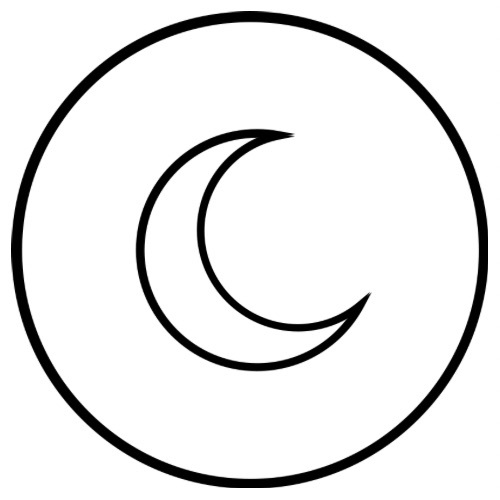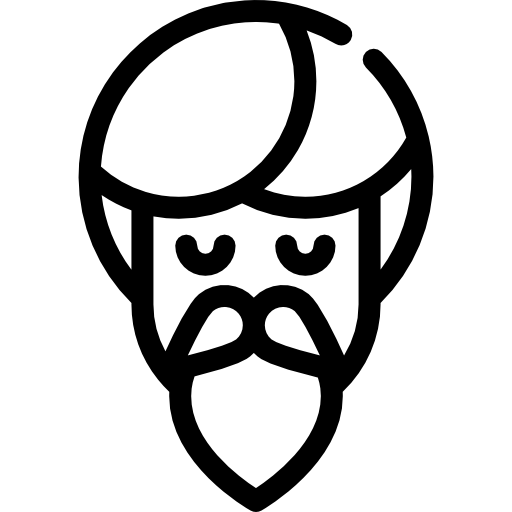
YOGASVARUPE
Tantra and Chakra
In Tantra, chakras are viewed as spinning vortices of energy in the body and as storehouses of experiences and memories. When the chakras are balanced—meaning they’re not over-or underactive—a Tantra practitioner can experience clarity, access power, and feel more joyful, fearless, and free.
The practice of chakras was first introduced in tantric traditions to mediate or to waken spiritually. Most of the schools of traditions accept the role of chakras in the human body. they also accept that the same way the whole universe is formed on the basis of the chakra (energy vortex) so what is inside is also outside the same. The architecture of the temples and houses was also based on the understanding of chakras and their role in life.
The practice of chakras was first introduced in tantric traditions to mediate or to waken spiritually. Most of the schools of traditions accept the role of chakras in the human body. they also accept that the same way the whole universe is formed on the basis of the chakra (energy vortex) so what is inside is also outside the same. The architecture of the temples and houses was also based on the understanding of chakras and their role in life.

Chakras
Tantra recognizes seven energy centers in the human body. These are known as 'chakras'. Chakra means "what revolves" and hence signifies a wheel.
The term ‘Chakra’ is also Sanskrit for wheel. This refers to the spinning, spherical energy center that makes up a chakra. That energy is ancestrally known as ‘prana’. Six of them are found along the spine and the seventh is located at the crown of the head.
They are invisible to the eye, these wheels of spiritual energy balance the body and the spirit. The chakras store dynamic energy known as Kundalini. Each chakra spins in a clockwise direction and is depicted by a colour. These whirling vortices of energy glow with the light of the spectrum, from red at the base, to violet at the crown. Each of the seven chakras has a unique characteristic and a vital role to play in our physical body as well as in our consciousness.
The term ‘Chakra’ is also Sanskrit for wheel. This refers to the spinning, spherical energy center that makes up a chakra. That energy is ancestrally known as ‘prana’. Six of them are found along the spine and the seventh is located at the crown of the head.
They are invisible to the eye, these wheels of spiritual energy balance the body and the spirit. The chakras store dynamic energy known as Kundalini. Each chakra spins in a clockwise direction and is depicted by a colour. These whirling vortices of energy glow with the light of the spectrum, from red at the base, to violet at the crown. Each of the seven chakras has a unique characteristic and a vital role to play in our physical body as well as in our consciousness.
The three lower chakras correlate to basic primary needs, those of survival, procreation, and will. The four higher chakras correlate to the psychological make-up and represent higher spiritual qualities such as love, compassion, and understanding.
In a physical sense, the chakras are visualized as lotuses, composed of different numbers of petals. Each chakra governs a certain sense organ and has its own presiding deity.
In a physical sense, the chakras are visualized as lotuses, composed of different numbers of petals. Each chakra governs a certain sense organ and has its own presiding deity.

It is believed that the chakras vitalize the physical body and influence the physical, emotional, and mental movements of the mind and body. They are considered to be the loci of life-energy (known as prana, shakti, or chi), which also flow through them along the pathways called nadis. The main function of the chakras is to draw in the prana by spinning around their own axes and holding it in their respective spheres to maintain and balance the spiritual, mental, emotional, and physical wellbeing of the mind and body.
Origins and development of the concept of chakras
The earliest known mention of chakras is found in the later Upanishads, including specifically the Brahma Upanishad and the Yoga tattva Upanishad, kundalini Upanishad. These Vedic models were adapted in Tibetan Buddhism as Vajrayana theory and in the Tantric Shakta theory of chakras. The concept of chakras was adopted by the Vedantists and also the agama tradition where Shakta tantra comes from.
Many philosophies agreed on the understanding of awakening the kundalini, which can be raised through various techniques and different approaches.
In the ritual and spiritual traditions of Hinduism, chakra is used to denote any phenomenon which has a cyclical or circular motion or aspect to it. For example, it is used to describe the wheel of Time (Kala chakra), the wheel of Dharma (dharma chakra), the wheel of life (jivana chakra), and the wheel of creation (Srishti chakra). All these are cyclical in nature.
Many philosophies agreed on the understanding of awakening the kundalini, which can be raised through various techniques and different approaches.
In the ritual and spiritual traditions of Hinduism, chakra is used to denote any phenomenon which has a cyclical or circular motion or aspect to it. For example, it is used to describe the wheel of Time (Kala chakra), the wheel of Dharma (dharma chakra), the wheel of life (jivana chakra), and the wheel of creation (Srishti chakra). All these are cyclical in nature.
Chakra is also used to denote the energy centers in the spinal region of the body and the mystic diagrams (yantras) which are used in ritual worship to activate the serpent energy as kundalini.
The awakening of each Chakra is supposed to elevate one’s consciousness to higher levels along with providing certain siddhis to the yogi.
The awakening of each Chakra is supposed to elevate one’s consciousness to higher levels along with providing certain siddhis to the yogi.

The eight siddhis (Ashtasiddhi अष्टसिध्दि) are:
- Aṇimā: reducing one's body even to the size of an atom
- Mahima: expanding one's body to an infinitely large size
- Garima: becoming infinitely heavy
- Laghima: becoming almost weightless
- Prāpti: having unrestricted access to all places
- Prākāmya: realizing whatever one desires
- Iṣṭva: possessing absolute lordship
- Vaśtva: the power to subjugate all
Lalita Sahasranama stotra from Brahmanda Purana gives the most precise description of chakras from Upanishads and puranas.
Muladharaika nilaya bramhagrandhi vibhedini। Manipurantarudita vishnugrandhi vibhedine।। – 38
Aagyna-chakrantaralasdha rudra-grandhi vibhedini। Sahasraranbujaruda sudhasarabhivarshinee।। – 39
Tatillata samaruchi shatchakropari sansdhita। Mahashakti-kundalini bisatantu taniyasi।। – 40
Aagyna-chakrantaralasdha rudra-grandhi vibhedini। Sahasraranbujaruda sudhasarabhivarshinee।। – 39
Tatillata samaruchi shatchakropari sansdhita। Mahashakti-kundalini bisatantu taniyasi।। – 40
The seven chakras
1.Muladhara Chakra:
Muladhara means "root foundation", and is hence also known as the root chakra. It is located at the base of the spine. This chakra has four petals and rules the organ of smell, the nose. Its presiding deity is Brahma.
It controls the solid factor of the body and is related to the excretory functions. It is controlled by the conscious layer of the mind. It is here where the spiritual and evolutionary journey begins; this is the densest expression of creation, where consciousness, both in the macrocosmic universe and in the microcosmic reflection of mind in the individual has been solidified to the greatest degree. It is here that the static energy of kundalini, the latent force of cosmic energy in the individual, resides.
It controls the solid factor of the body and is related to the excretory functions. It is controlled by the conscious layer of the mind. It is here where the spiritual and evolutionary journey begins; this is the densest expression of creation, where consciousness, both in the macrocosmic universe and in the microcosmic reflection of mind in the individual has been solidified to the greatest degree. It is here that the static energy of kundalini, the latent force of cosmic energy in the individual, resides.
Meaning: root
Shape: square
Colour: golden
Acoustic root: lam (pronounced “lung”)
Called: the root chakra, terranean plexus
Location: the lowest point of the last bone of the spinal column
Element: earth
Factor: solid
Vrttis: spiritual aspiration, psycho-spiritual longing, psychic desire, physical lust
Physical malfunction: constipation, sciatica, hemorrhoids, obesity, anorexia
Psychological issues: survival, ambition, will to live
Controlled by: the conscious layer of mind
Bodily function: excretory
Glands: gonads (ovaries, testes)
Activities to strengthen: “grounding” exercises; yoga posture yoga mudra
Foods to strengthen: proteins in the form of grains, beans, and dairy products
Colour therapy to strengthen: red
Shape: square
Colour: golden
Acoustic root: lam (pronounced “lung”)
Called: the root chakra, terranean plexus
Location: the lowest point of the last bone of the spinal column
Element: earth
Factor: solid
Vrttis: spiritual aspiration, psycho-spiritual longing, psychic desire, physical lust
Physical malfunction: constipation, sciatica, hemorrhoids, obesity, anorexia
Psychological issues: survival, ambition, will to live
Controlled by: the conscious layer of mind
Bodily function: excretory
Glands: gonads (ovaries, testes)
Activities to strengthen: “grounding” exercises; yoga posture yoga mudra
Foods to strengthen: proteins in the form of grains, beans, and dairy products
Colour therapy to strengthen: red

2. Svadhishthana Chakra:
In Sanskrit, Swadhishthana means self-abode. It is situated in the spine in the region just above the genitals and is made up of six petals. This chakra governs the principle of taste, and its presiding deity is Lord Vishnu.
It controls the liquid factor of the body, is related to sexual functions, and is controlled by the subconscious layer of the mind.
As the kundalini pierces this chakra, you realize, “Brahma (Cosmic Consciousness) is everywhere; Brahma is all that exists.”
It controls the liquid factor of the body, is related to sexual functions, and is controlled by the subconscious layer of the mind.
As the kundalini pierces this chakra, you realize, “Brahma (Cosmic Consciousness) is everywhere; Brahma is all that exists.”
Meaning: sweet
Shape: crescent
Colour: milky white
Acoustic root: Vam (pronounced “wung”)
Called: fluidal plexus
Location: spinal cord, directly behind the root of the genitals (perineum)
Element: water
Factor: liquid
Vrttis: indifference, lack of common sense, fear of death, lack of confidence, hopelessness, crude behavior
Physical malfunction: impotence, kidney and bladder infections, reproductive problems
Psychological issues: sexuality, gender, and sexual identity, ethics, body image
Controlled by: the subconscious layer of mind
Body function: sexual
Glands: gonads (ovaries, testes)
Activities to strengthen: yoga postures yoga mudra and diirgha pranam; meditation in conjunction with sexual abstinence
Foods to strengthen: liquids, especially herbal teas and soups; watery vegetables such as jicama and celery, neem leaves
Colour therapy to strengthen: orange.
Shape: crescent
Colour: milky white
Acoustic root: Vam (pronounced “wung”)
Called: fluidal plexus
Location: spinal cord, directly behind the root of the genitals (perineum)
Element: water
Factor: liquid
Vrttis: indifference, lack of common sense, fear of death, lack of confidence, hopelessness, crude behavior
Physical malfunction: impotence, kidney and bladder infections, reproductive problems
Psychological issues: sexuality, gender, and sexual identity, ethics, body image
Controlled by: the subconscious layer of mind
Body function: sexual
Glands: gonads (ovaries, testes)
Activities to strengthen: yoga postures yoga mudra and diirgha pranam; meditation in conjunction with sexual abstinence
Foods to strengthen: liquids, especially herbal teas and soups; watery vegetables such as jicama and celery, neem leaves
Colour therapy to strengthen: orange.

3. Manipura Chakra:
Manipura means "the city of gems", and this chakra is thought to be radiant like a city of jewels. It is also called the 'navel' chakra since it is located behind the navel. It is made up of ten petals, and its presiding deity is Rudra. The Manipura chakra rules over the sense organ of sight, the eyes.
It is controlled by the supramental or intuitive layer of the mind.
You experience the close proximity of your goal as you gain control over this chakra.
You can hardly remember a time when the intense desire for self-realization was not the pivot of your life.
It is controlled by the supramental or intuitive layer of the mind.
You experience the close proximity of your goal as you gain control over this chakra.
You can hardly remember a time when the intense desire for self-realization was not the pivot of your life.
Meaning: fiery gem
Shape: triangular, pointed upward
Colour: fiery red-orange
Acoustic root: ram (pronounced “rung”)
Called: igneous or solar plexus (because of its relationships with effects of the sun on the body)
Location: at the navel
Element: fire
Factor: luminous
Vrttis: shyness, sadistic tendencies, envy, inertia, melancholy, peevishness, yearning for acquisition, blind attachment, hatred, fear
Shape: triangular, pointed upward
Colour: fiery red-orange
Acoustic root: ram (pronounced “rung”)
Called: igneous or solar plexus (because of its relationships with effects of the sun on the body)
Location: at the navel
Element: fire
Factor: luminous
Vrttis: shyness, sadistic tendencies, envy, inertia, melancholy, peevishness, yearning for acquisition, blind attachment, hatred, fear

Physical malfunction: ulcers, pancreatitis, diabetes
Psychological issues: personal power, self-esteem, work
Controlled by: a supramental layer of mind
Body function: digestion
Glands: pancreas, adrenals
Activities to strengthen: yoga postures cobra and yoga mudra
Foods to strengthen: starches such as potatoes and yams
Colour therapy to strengthen: yellow
Psychological issues: personal power, self-esteem, work
Controlled by: a supramental layer of mind
Body function: digestion
Glands: pancreas, adrenals
Activities to strengthen: yoga postures cobra and yoga mudra
Foods to strengthen: starches such as potatoes and yams
Colour therapy to strengthen: yellow
4. Anahata Chakra:
Anahata means "unstuck sound", and it is from this chakra that the inner sounds or natural music of the body is said to arise. It is made up of twelve petals and is located along the spine at the level of the heart. Its presiding deity is believed to be Isha. It governs the organ of touch, the skin.
It is controlled by the subliminal layer of the mind.
The state of consciousness experienced as the kundalini pierces it is one of divine love.
The fourth chakra is often called the “yogic heart” because as the practitioner’s attainment rises to this level, she becomes more and more like a lover on fire with devotion to her Beloved.
The desires for the experiences, joys, and pleasures of the physical world pale in comparison to the ecstatic, encompassing love meditation brings.
Even the contemplation of the infinite gives you an intense joy that brings a special radiance and grace
It is controlled by the subliminal layer of the mind.
The state of consciousness experienced as the kundalini pierces it is one of divine love.
The fourth chakra is often called the “yogic heart” because as the practitioner’s attainment rises to this level, she becomes more and more like a lover on fire with devotion to her Beloved.
The desires for the experiences, joys, and pleasures of the physical world pale in comparison to the ecstatic, encompassing love meditation brings.
Even the contemplation of the infinite gives you an intense joy that brings a special radiance and grace
Meaning: pure, untarnished
Shape: circular
Colour: smoky green
Acoustic root: yam (pronounced “Yung”)
Called: lunar plexus (because of its relationship with the effects of the moon on the body)
Location: at the center of the chest, just above the sternum
Element: air
Factor: aerial
Shape: circular
Colour: smoky green
Acoustic root: yam (pronounced “Yung”)
Called: lunar plexus (because of its relationship with the effects of the moon on the body)
Location: at the center of the chest, just above the sternum
Element: air
Factor: aerial

Psychological issues: feeling your emotions, joy and pain, gratitude, grief, love, transformation of personal love to universal love, feeling “at one” with others and the universe
Controlled by: a subliminal layer of mind
Body function: heart and lungs, circulation and breathing
Glands: thymus
Activities to strengthen: yoga asana cobra; deep meditation, regulated breathing (pranayama); loving-kindness in thought, word, and deed; spending time in forests and near natural water
Foods to strengthen: pure water and air, blue-green algae, chlorella, spirulina, seaweed
Colour therapy to strengthen: green
Controlled by: a subliminal layer of mind
Body function: heart and lungs, circulation and breathing
Glands: thymus
Activities to strengthen: yoga asana cobra; deep meditation, regulated breathing (pranayama); loving-kindness in thought, word, and deed; spending time in forests and near natural water
Foods to strengthen: pure water and air, blue-green algae, chlorella, spirulina, seaweed
Colour therapy to strengthen: green
5. Vishuddha Chakra:
Vishudhi means "very pure", and as such, this center is believed too very subtle. It is made up of sixteen petals, and the presiding deity is Ardhanarishvara. This chakra governs the organ of sound, the ears, and is located in the throat.
It is controlled by the highest layer of mind, the subtle causal layer.
This chakra controls the ones below, thus it coordinates all the energies of the physical body.
Control of this chakra brings with it the knowledge of past, present, and future.
You hear the cosmic sound the Auṁkāra (“AUM”) in deep meditation.
You are one with the cosmic mind, from whom the generation (“A” sound), the operation (“U”), and the destruction (“M”) of the entire cosmos reside.
You are merged with the pure “I am” — the origin of the universe.
It is controlled by the highest layer of mind, the subtle causal layer.
This chakra controls the ones below, thus it coordinates all the energies of the physical body.
Control of this chakra brings with it the knowledge of past, present, and future.
You hear the cosmic sound the Auṁkāra (“AUM”) in deep meditation.
You are one with the cosmic mind, from whom the generation (“A” sound), the operation (“U”), and the destruction (“M”) of the entire cosmos reside.
You are merged with the pure “I am” — the origin of the universe.
Meaning: purification
Shape: hexagonal
Color: rainbow-hued
Acoustic root: ham (pronounced “hung”)
Called: sidereal plexus
Location: throat (at vocal cord)
Element: ether
Factor: etheric
Vrttis: some of the Vrttis at this chakra are fruition, accomplishment, development of mundane knowledge, integrity, resolve, surrender to the Supreme, attraction, and repulsion
Physical malfunction: colds, sore throat, bronchitis, thyroid, speech and hearing problems
Shape: hexagonal
Color: rainbow-hued
Acoustic root: ham (pronounced “hung”)
Called: sidereal plexus
Location: throat (at vocal cord)
Element: ether
Factor: etheric
Vrttis: some of the Vrttis at this chakra are fruition, accomplishment, development of mundane knowledge, integrity, resolve, surrender to the Supreme, attraction, and repulsion
Physical malfunction: colds, sore throat, bronchitis, thyroid, speech and hearing problems

Psychological issues: listening, expressing your thoughts and feelings, creative expression
Controlled by: subtle causal layer of mind
Body function: speech and hearing
Glands: thyroid, parathyroid
Activities to strengthen: yoga asanas sarvaungasana (shoulder stand), matsyamudra (fish), singing devotional songs, listening to devotional/spiritual music, creative artistic expression
Foods to strengthen: fruits and fruit juices
colour therapy to strengthen: blue
Controlled by: subtle causal layer of mind
Body function: speech and hearing
Glands: thyroid, parathyroid
Activities to strengthen: yoga asanas sarvaungasana (shoulder stand), matsyamudra (fish), singing devotional songs, listening to devotional/spiritual music, creative artistic expression
Foods to strengthen: fruits and fruit juices
colour therapy to strengthen: blue
6. Ajna Chakra:
Ajna means command, and this chakra is called the center of command as it is from here that the other chakras are guided. It is often called the Third Eye, and is located between the eyebrows. It is made up of forty-eight petals, and its presiding deity is Paramashiva. It rules over the mind as a sense organ.
The sixth chakra is called the “seat of the mind” and is located at the “third eye,” directly above the nose, between the eyebrows.
No physical factor is controlled here.
Beyond the reach of limitation, having broken the mirror of the ego, when the kundalini reaches this chakra, you are merged in the consciousness from which the mind of God originates.
The sixth chakra is called the “seat of the mind” and is located at the “third eye,” directly above the nose, between the eyebrows.
No physical factor is controlled here.
Beyond the reach of limitation, having broken the mirror of the ego, when the kundalini reaches this chakra, you are merged in the consciousness from which the mind of God originates.
Meaning: to see or perceive
Shape: triangular, pointed downward
Color: none
Acoustic root: none
Called: third eye
Location: at the bridge of the nose, between the eyebrows
Element: none
Factor: none
Vrttis: mundane knowledge, spiritual knowledge
Physical malfunction: headaches, vision problems, cognitive difficulties
Shape: triangular, pointed downward
Color: none
Acoustic root: none
Called: third eye
Location: at the bridge of the nose, between the eyebrows
Element: none
Factor: none
Vrttis: mundane knowledge, spiritual knowledge
Physical malfunction: headaches, vision problems, cognitive difficulties

Psychological issues: ideals, beliefs, intuition, self-realization
Controlled by: atman (soul)
Body function: thought, awareness
Glands: pituitary
Activities to strengthen: yoga asanas yoga mudra, diirgha pranam; study involving concentration; meditation
Foods to strengthen: none
Color therapy to strengthen: deep blue (indigo)
Controlled by: atman (soul)
Body function: thought, awareness
Glands: pituitary
Activities to strengthen: yoga asanas yoga mudra, diirgha pranam; study involving concentration; meditation
Foods to strengthen: none
Color therapy to strengthen: deep blue (indigo)
7. Sahasra Padma Chakra:
Sahasra in Sanskrit means thousand, and padma means lotus, this chakra hence is also known as "the thousand-petalled lotus." It is located above the crown of the head. It is the meeting place of the Kundalini Shakti with Shiva. It governs the voluntary nervous system, and is said to be the seat of pure consciousness or ultimate bliss.
It is here that the kundalini reaches its goal and awareness merges completely in infinite consciousness, the origin or origins. There is no human expression for this state. It is beyond anything we can imagine.
We know of it only by its after-effects: the waves of ecstasy that follow even a fraction of a moment in that state. When no samskaras (reactive momenta) are left to bind the individual to the physical world, the merger in this state will be complete. Like the doll made of salt who tried to measure the ocean, your consciousness merges in the immeasurable expanse of your own origin.
This the goal of human life.
It is here that the kundalini reaches its goal and awareness merges completely in infinite consciousness, the origin or origins. There is no human expression for this state. It is beyond anything we can imagine.
We know of it only by its after-effects: the waves of ecstasy that follow even a fraction of a moment in that state. When no samskaras (reactive momenta) are left to bind the individual to the physical world, the merger in this state will be complete. Like the doll made of salt who tried to measure the ocean, your consciousness merges in the immeasurable expanse of your own origin.
This the goal of human life.
Meaning: thousand petals
Shape: thousand-petaled lotus
Color: none
Acoustic root: none
Called: the seat of the soul
Location: At the top (crown) of the head
Element: none
Factor: none
Vrttis: none
Physical malfunction: none
Psychological issues: none
Controlled by: universal consciousness
Body function: none
Glands: pineal
Activities to strengthen: deep meditation
Foods to strengthen: none
Color therapy to strengthen: violet
Shape: thousand-petaled lotus
Color: none
Acoustic root: none
Called: the seat of the soul
Location: At the top (crown) of the head
Element: none
Factor: none
Vrttis: none
Physical malfunction: none
Psychological issues: none
Controlled by: universal consciousness
Body function: none
Glands: pineal
Activities to strengthen: deep meditation
Foods to strengthen: none
Color therapy to strengthen: violet

CHAKRA AND KUNDALINI
The Sanskrit word kundalini means 'coiled-up'. The coiled Kundalini is the female energy existing in latent form, not only in every human being but in every atom of the universe. It may frequently happen that an individual's Kundalini energy lies dormant through his or her entire life and he or she is unaware of its existence. The object of the tantric practice of Kundalini yoga is to awaken this cosmic energy and cause it to unite with Shiva, the Pure Consciousness pervading the whole universe.
In the concept of the Yoga Kundalini Upanishad:
"The divine power,
Kundalini shines
Like the stem of a young lotus;
Like a snake, coiled round upon herself,
She holds her tail in her mouth
And lies resting half asleep
At the base of the body."
"The divine power,
Kundalini shines
Like the stem of a young lotus;
Like a snake, coiled round upon herself,
She holds her tail in her mouth
And lies resting half asleep
At the base of the body."
The static, unmanifested Kundalini is symbolized by a serpent coiled into three and a half circles, with its tail in its mouth.
In the microcosm of the human body, the Goddess Kundalini appears as dormant energy, but able, when she wakes up, to destroy the illusion of life and lead to liberation. She can be awakened through the practice of what is known as Kundalini-Yoga, a unique branch of esoteric Tantra.
When the Kundalini is ready to unfold, she ascends from the Muladhara Chakra to unite above the head with Shiva at the Sahasra Chakra. But before this merger, she must ascend and pass through each of the five remaining chakras.
In the microcosm of the human body, the Goddess Kundalini appears as dormant energy, but able, when she wakes up, to destroy the illusion of life and lead to liberation. She can be awakened through the practice of what is known as Kundalini-Yoga, a unique branch of esoteric Tantra.
When the Kundalini is ready to unfold, she ascends from the Muladhara Chakra to unite above the head with Shiva at the Sahasra Chakra. But before this merger, she must ascend and pass through each of the five remaining chakras.

As Kundalini reaches each chakra, that lotus opens and lifts its flower; and as soon as she leaves for a higher chakra, the lotus closes its petals and hangs down, symbolizing the activation of the energies of the chakra and their assimilation in Kundalini. The increasing number of lotus petals, in ascending order, may be taken to indicate the rising energy of the respective chakras, each functioning as a 'transformer' of energies from one potency to another.
The Elements of The Chakras
Chakras are governed on the principles of 5 major elements in the cosmos. this is seen as the part of prakriti or the shakti itself where it constantly transforms and evolves with help of 36 tattvas. Out of that these are the 5 mahabhuta (gross elements of the nature. where earth was made at the last.
There are 7 chakras in the human body and these are the elements associated with each chakra:
There are 7 chakras in the human body and these are the elements associated with each chakra:
- Root Chakra (Muladhara) - Earth Element
- Sacral Chakra (Swadhishthana) - Water Element
- Solar Plexus Chakra (Manipura) - Fire Element
- Heart Chakra (Anahata) - Air Element
- Throat Chakra (Vishuddha) - Ether (Space) Element
- Third Eye Chakra (Ajna) - Light
- Crown Chakra (Sahasrara) – Thought

The Bija Mantras Are The Sounds Of The Chakras
Mantra, chants or sounds can help activate certain channels, energy centers, or chakras in the body. Bija (pronounced BEEJ) means seed. The Bija Mantras are one-syllable sounds that are meant to activate the chakras along the centerline of the body or the 7 main chakras. Each beeja and mantra is associated with its own color.
- LAM (LUM) Red Root Chakra
- VAM (VUM) Orange Sacral Chakra
- RAM (RUM) Yellow. Solar Plexus Chakra
- YAM (YUM) Green Heart Chakra
- HAM (HUM) Blue Throat Chakra
- OM (OM) Indigo Third Eye Chakra
- Silence (OM) Purple Crown Chakra
Chakra and petals
The relationship between the number of chakra petals and the human body is much more fundamental. The number of petals of the lotuses varies. Muladhara, Swadhishthana, Manipura, Anahata, Vishuddha, and Ajna Chakras have 4, 6, 10, 12, 16, and 2 petals respectively.
Often only a symbolic meaning is given to the petal counts, especially when discussed in relation to the Sanskrit characters that are traditionally assigned to the chakras and their petals.
Often only a symbolic meaning is given to the petal counts, especially when discussed in relation to the Sanskrit characters that are traditionally assigned to the chakras and their petals.
1.The root chakra has four petals and is often visualized as parallel to the ground.
vaṁ, śaṁ, ṣaṁ, saṁ
2.The Svadhisthana (2nd chakra) has 6 petals.
baṁ, bhaṁ, maṁ, yaṁ, raṁ, laṁ
3.Then the petals of the navel chakra are visualized with the next 10 letters.
ḍaṁ, ḍhaṁ, ṇaṁ, taṁ, thaṁ, daṁ, dhaṁ, naṁ, paṁ, phaṁ
4.heart chakra is visualized with the first twelve consonants of the Sanskrit alphabet.
kaṁ, khaṁ, gaṁ, ghaṁ, ṅaṁ, caṁ, chaṁ, jaṁ, jhaṁ, ñaṁ, ṭaṁ, ṭhaṁ
5.throat chakra is visualised
aṁ, āṁ, iṁ, īṁ, uṁ, ūṁ, ṛṁ ṝṁ ḷṁ ḹṁ eṁ aiṁ oṁ auṁ aṁ aḥ
6.ajna chakra
Hum and shum
vaṁ, śaṁ, ṣaṁ, saṁ
2.The Svadhisthana (2nd chakra) has 6 petals.
baṁ, bhaṁ, maṁ, yaṁ, raṁ, laṁ
3.Then the petals of the navel chakra are visualized with the next 10 letters.
ḍaṁ, ḍhaṁ, ṇaṁ, taṁ, thaṁ, daṁ, dhaṁ, naṁ, paṁ, phaṁ
4.heart chakra is visualized with the first twelve consonants of the Sanskrit alphabet.
kaṁ, khaṁ, gaṁ, ghaṁ, ṅaṁ, caṁ, chaṁ, jaṁ, jhaṁ, ñaṁ, ṭaṁ, ṭhaṁ
5.throat chakra is visualised
aṁ, āṁ, iṁ, īṁ, uṁ, ūṁ, ṛṁ ṝṁ ḷṁ ḹṁ eṁ aiṁ oṁ auṁ aṁ aḥ
6.ajna chakra
Hum and shum

The petal count for each chakra is related to certain specific groupings of vertebrae and certain specific groupings of nerve pairs in the peripheral nervous system (PNS) that emanate from the spinal column through the vertebrae.

The 7 Chakras and Endocrine Glands
Each of the chakras in the body is paired with an endocrine gland and governs its function. So, before we go any further, here are each of the chakras, their corresponding gland, and their function:
- Root chakra — Reproductive glands (testes in men; ovaries in women); controls sexual development and secretes sex hormones.
- Sacral chakra — Adrenal glands; regulates the immune system and metabolism.
- Solar Plexus chakra — Pancreas; regulates metabolism.
- Heart chakra — Thymus gland; regulates the immune system.
- Throat chakra — Thyroid gland; regulates body temperature and metabolism.
- Third Eye chakra — Pituitary gland; produces hormones and governs the function of the previous five glands; sometimes, the pineal gland is linked to the third eye chakra as well as to the crown chakra.
- Crown chakra — Pineal gland; regulates biological cycles, including sleep.
Chakras and Organs
In addition to each chakra governing one of the seven glands, keep in mind there are major organs that are also affected. Here is a list of each chakra and the organs it influences:
- Root — Testes, kidneys, spine
- Sacral– Bladder, prostate, ovaries, kidneys, gall bladder, bowel, spleen
- Solar Plexus — Intestines, pancreas, liver, bladder, stomach, upper spine
- Heart — Heart, lungs
- Throat — Bronchial tubes, vocal cords, respiratory system, all areas of the mouth, including tongue and esophagus.
- Third Eye — Eyes, pituitary and pineal glands, brain
- Crown — Spinal cord and brain stem
Chakra and planets
There are seven planets that rule us. They are Sun, Moon, Mercury, Venus, Mars, Jupiter, and Saturn. Additionally, the two shadow planets Rahu and Ketu also rule us. There are seven chakras in our body that balance our spiritual, mental, and physical aspects. The relationship between the chakras and planets is that the seven planets govern the seven chakras in our body.
The chakras and planets in astrology have a significant relationship. One of the seven planets rules each chakra. As a result, every chakra displays the nature of its ruling planet. The birth chart is formulated based on the time and date one is born. Also, it shows the positions the planets were in when we were born. The birth chart also depicts how the planets define our characteristics and affect our chakras.
The planets govern the chakras in our bodies. The planet’s position in the birth charts defines one’s nature and characteristics. By observing the different chakras and their ruling planet, one can identify the reason behind the sudden highs and lows in one’s life. Let us take a look at the relationship between planets and chakras, and how they affect a person’s life.
The chakras and planets in astrology have a significant relationship. One of the seven planets rules each chakra. As a result, every chakra displays the nature of its ruling planet. The birth chart is formulated based on the time and date one is born. Also, it shows the positions the planets were in when we were born. The birth chart also depicts how the planets define our characteristics and affect our chakras.
The planets govern the chakras in our bodies. The planet’s position in the birth charts defines one’s nature and characteristics. By observing the different chakras and their ruling planet, one can identify the reason behind the sudden highs and lows in one’s life. Let us take a look at the relationship between planets and chakras, and how they affect a person’s life.

Mooladhara = mars
The first chakra is at the base of the spinal cord. It is also known as the root chakra. The planet Mars rules this chakra. Muladhara chakra represents innocence, wisdom, and purity. It also represents a sense of direction and a strong connection with life. If this chakra is strong in you, it will give you wisdom and make you decisive. As a result, you will also have the ability to go in the right direction and take the right decision. Mars represents strength and action and its energy is natural, intense, and instinctive. Hence, the native’s attitude will be courageous, enthusiastic, and curious.
Swadhisthana = mercury
This chakra is located in the abdomen. It is also known as the root chakra. Planet Mercury rules this chakra. Mercury represents intelligence and creativity. The role of Swadhishthana chakra is to break down fats and convert them into energy, which is required by the brain cells. This chakra also strengthens our memory and thinking capacity. If this chakra is strong in a person, he/she will be intelligent and have the ability to grasp things easily.
Manipura = jupiter
This chakra is located in the stomach. It represents balance, satisfaction, generosity and morality. It also signifies the capacity to evolve. The ruling planet of this chakra is Jupiter. The characteristics of Jupiter are noble, helpful, generous, and virtuous. Additionally, it grants prosperity and gives the native excess of everything, both good and bad. It is also known as the planet of good luck. This chakra also enhances one’s material and spiritual life.
Anahata = venus
This chakra is located in the heart and governed by the planet Venus. The characteristics of this chakra are love, compassion, self-confidence, and detachment. Venus represents love, beauty, and art. If Venus is placed well, it creates beauty and harmony. Additionally, when the influence of Venus is strong, the person is extremely beautiful. This beauty is also reflected in their behavior and attitude.
Vishhudha = saturn
This chakra is located in the throat. It governs the ability to distinguish between right and wrong in a person. The planet that governs this chakra is Saturn. With Saturn in the birth chart, one may feel very lonely. The position of Saturn in one’s natal chart can put a person through a testing phase. At times, the person may also find many obstacles and restrictions when he/she wants to do something. Once this phase is over, the person becomes stable, sturdy, and detached.
Agnya = sun
The sixth chakra is in the forehead. This chakra represents one’s ego and conditioning. The Sun governs this chakra. When the Agnya chakra is strong, their ego and conditioning cannot control them. The Sun is one’s natal chart can make a person dominating, egotistical, and vain. When this chakra is strong in a person, they also have the capacity to forgive someone easily.

Sahasrara = moon
This chakra is located in the crown of the head. The Moon rules this chakra. Moon also governs one’s instincts, mind, and emotions. According to Vedic astrology, the Moon represents one’s unconscious state of mind. When the moon is strong in one’s natal chart, the native is sensitive, sacrificing, creative and intuitive.





